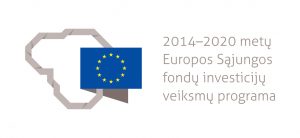PAST & FUTURE MILLET FOODWAYS (MILWAYS),
No. 101087964 (PI: Giedre Motuzaite Matuzeviciute Keen).
The MILWAYS project will use broomcorn millet (Panicum miliaceum) – and will bridge a large geographic territory tracking the earliest millet dispersals across eastern-central Europe from the mid. 2nd mill. BCE onwards along the south-north axis all the way to millet cultivation limit. MILWAYS will utilize the high carbon isotope values of millet, resulting from its C4-photosynthetic pathway in conjunction with the distinct miliacin biomarker in order to identify its consumption, with respect to shifting climates, human mobility, demographic categories of sex, age and changes of plant use across historical times.
Regional focus:
East and Central Europe that includes:
Lithuania, Latvia, Poland, Czech Republic, Slovakia, Moldova, Ukraine
You can follow us on X (former Twitter).
Past Projects:
Margins or nodes?
Margins or Nodes? Dietary Adaptation Strategies and the Role of Inner Asian Mountain Communities in Prehistoric Food Globalization
PI – dr. Giedrė Motuzaitė Matuzevičiūtė

Research is funded by European social fund.
Over the past years, archaeological research in Eurasia has demonstrated the antiquity of long-distance exchange and movement of goods, ideas, plants, animals and people that predates the Silk Roads by more than 3,000 years. While the distribution of certain plant species across Eurasia points towards ‘marginal’ landscapes as important vectors along trans-continental exchange routes, the mechanisms of exchange taking place within and through them remains contested. To date, however, little work has addressed the question of the role of marginal environments in early food globalization, or the filtering effect of plant and animal selection by communities occupying these marginal landscapes.

The goal of the research is to evaluate the role of highland zones to the food globalization processes in Eurasian prehistory. The territory of Kyrgyzstan situated in the central Tian Shan mountains constitutes a key study area for understanding the strategies people used to adapt their agricultural systems to one of the most challenging environments on earth. During the project, Bronze Age human subsistence mechanisms in these high altitude zones will be studied, pinpointing the timings of crop and animal arrival, and human choice and selection between species. Additionally, this project constitutes the first thorough, high-level archaeological investigation of settlement sites let by the first farming communities in Kyrgyzstan, where modern field methodologies and research techniques will be applied from the landscape scale to molecular level.



